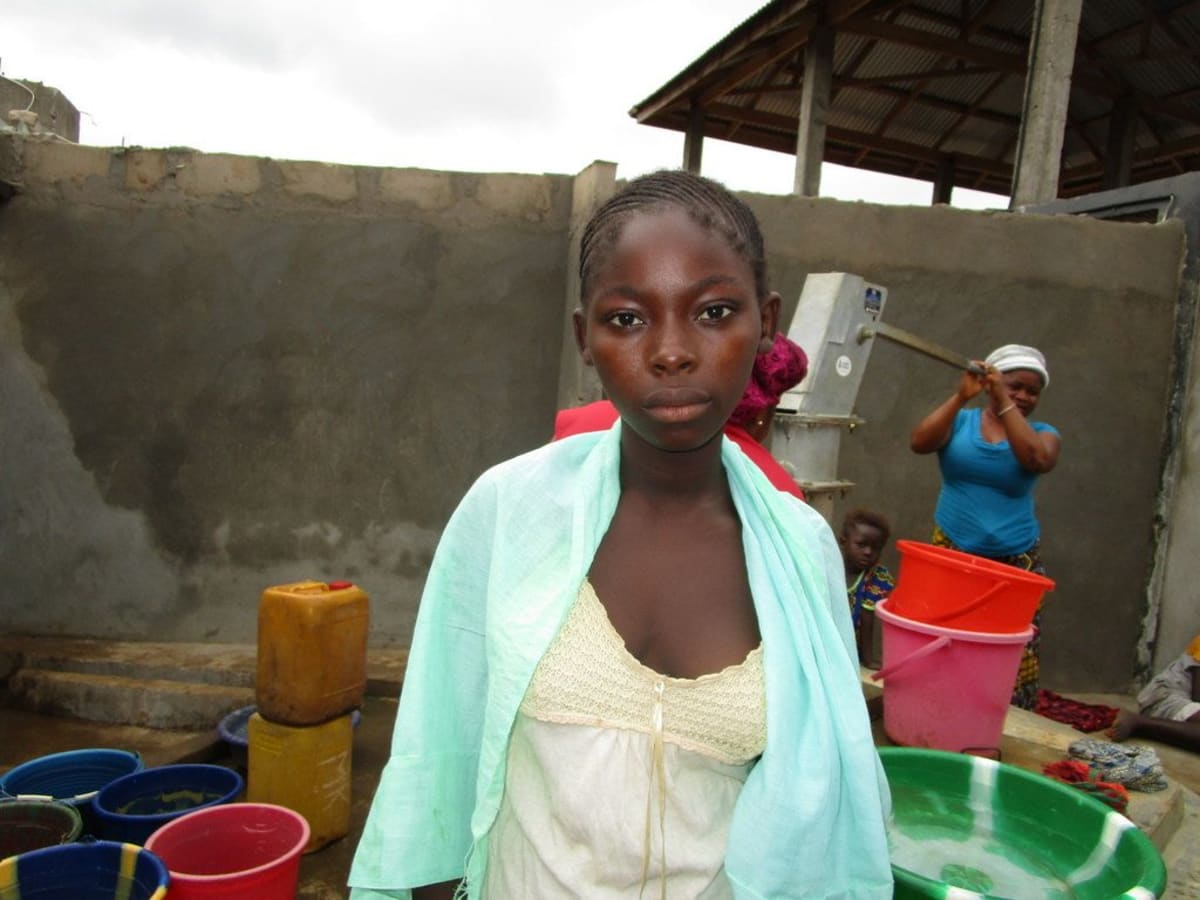This project is a part of our shared program with Mariatu’s Hope of Sierra Leone. Our team is pleased to directly share the below report (edited for clarity, as needed).
Welcome to the Community
Magburaka Road was named by Masamuta Turay, a man from Magburaka Town. Because of his love for his town, he gave the same name to his street.
This area of New London is very diverse. There are different kinds of people living in this community, Christians as well as Muslims. These people are all religiously tolerant and peaceful, nor is there any tribal discrimination.
The only cause of division is water scarcity. Mr. Kanu noticed this and wanted to do whatever he could. He decided to help the community by digging a water well. With that, his community started to improve. People are still building houses and becoming bigger every day.
Most community members are manual laborers and business people (airport workers, traders, or teachers), so they are always busy. Many people have gardens, either in their yard or in the swamp area not far from this community. Most of the homes here have electricity (from 7 PM-7AM), so most evenings families stay inside to watch football and movies.
Water Situation
There is a hand-dug well that we have been monitoring on a quarterly basis. As the years passed, we got more and more phone calls from the community. These calls were during the dry season, and a visit from our mechanic confirmed that this well is being negatively impacted by the lack of rain. Our monitoring officer confirms that they find the well is dry for no less than three months every year.
When this well isn't working, people don't get enough sleep. Women and children are forced to wake up even earlier to fetch water from the other sources that become very crowded. When there are water shortages, families sacrifice proper hygiene. When people can't get safe drinking water from this well, they are forced to use a nearby open well where they fetch dirty water with a rope and bucket.
Mr. Amadu Tholley pleaded, "The water in this community is very nice to drink. I cannot afford to miss it. There are other wells but this one is different. It taste like any spring water, so please help us fix the problem of the well drying!"
Sanitation Situation
Over half of the households have pit latrines, while the others share with their neighbor.
Everyone has a clothesline but there are few dish racks, so we plan to teach how to build dish racks during training. There are even a few hand-washing stations, though they didn't have a cleaning agent like soap or ash.
New London is home to people from diverse educational backgrounds. Some have created homes and environments that maintain good standards, while others don't know any better.
Plans: Hygiene and Sanitation Training
There will be hygiene and sanitation training sessions offered for three days in a row.
After our visit, the hygiene and sanitation trainer decided it would be best to teach community members how to build a tippy tap (a hand-washing station built with a jerrycan, string, and sticks). They will use these tippy taps for hand-washing demonstrations, and will also teach about other tools like dish racks and the importance of properly penning in animals.
These trainings will also strengthen the water user committee that manages and maintains this well. They enforce proper behavior and report to us whenever they need our help solving a serious problem, like a pump breakdown.
Plans: Well Rehabilitation
The well marked for this overhaul is dry for many months every year and needs major work to supply adequate, clean water to the community year round. The pump will be removed, and a man will be lowered inside with a hand auger. This hand auger will allow the team to drill several meters deeper to hit a sufficient water column that will ensure the well supplies water throughout the drier seasons. As the team drills, casing will be installed, transforming this hand-dug well into a pseudo-borehole. PVC piping will connect this lower system directly to the pump, a construction that we know will also improve the quality of water.
Once this plan is implemented, everyone within the community will have access to safe drinking water in both quality and quantity, even through the dry months.

 Protected Dug Well
Protected Dug Well































